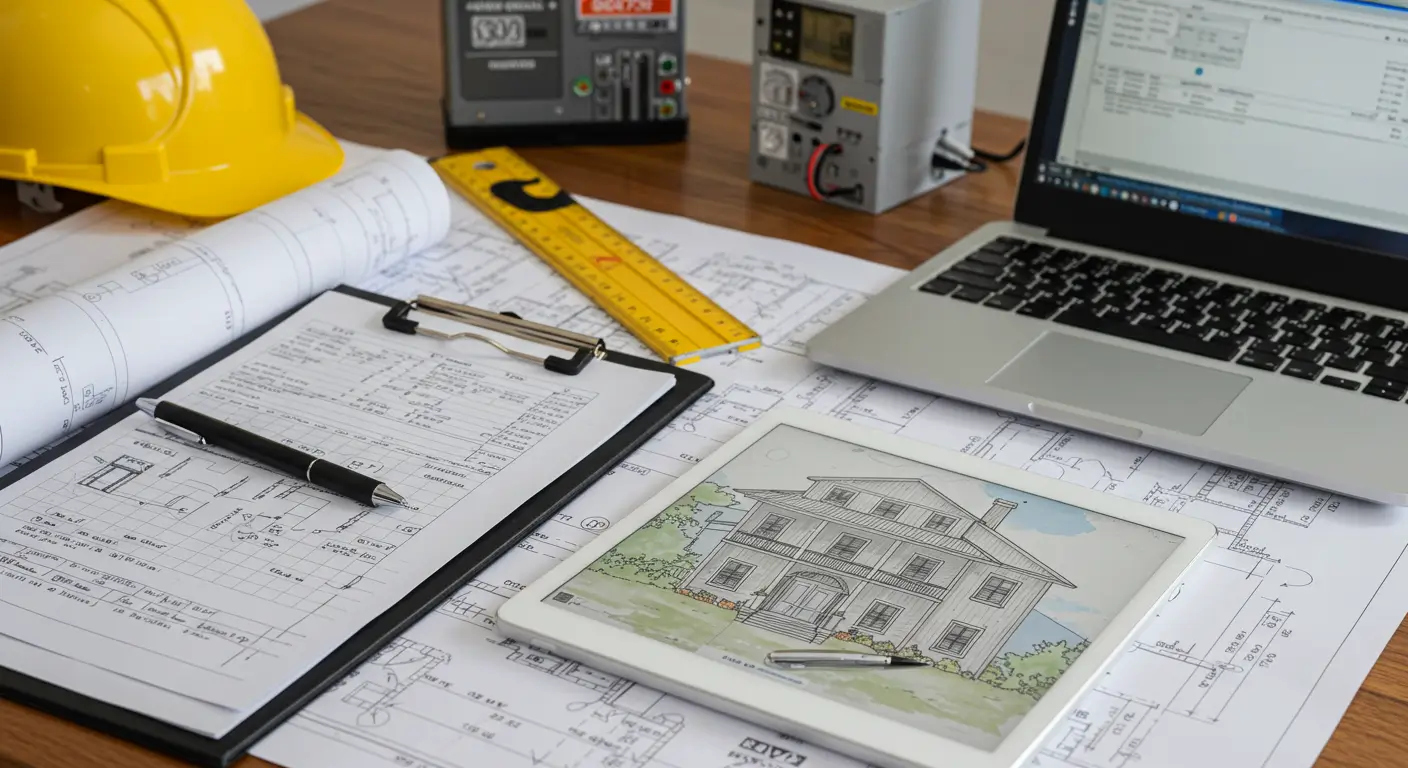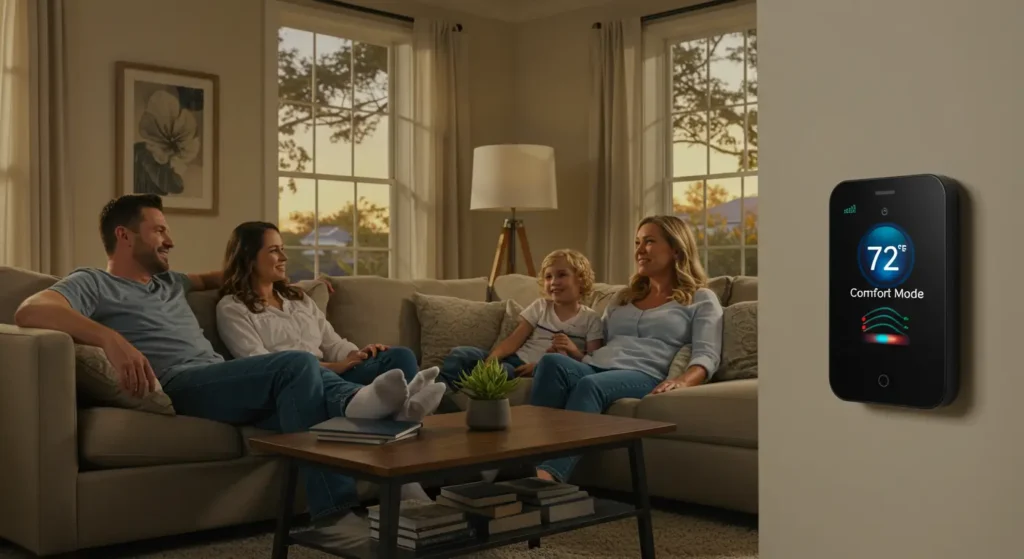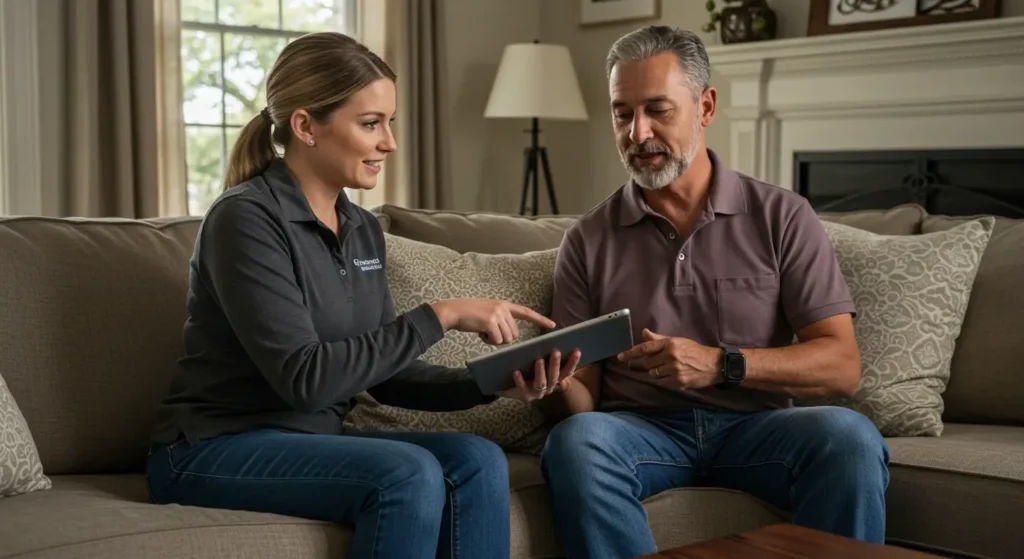Complete guide to HVAC installation for New Orleans homeowners. Learn system selection, installation process, costs, and how to choose the right contractor for your climate needs.
Table of Contents
Getting a new HVAC system installed in New Orleans isn’t like anywhere else. Between our brutal summers that last from April through October, humidity levels that can cause your old system to fail, and the unique challenges of our historic homes, you need more than just a generic installation.
We’ve been installing HVAC systems throughout the New Orleans area for over a decade, and here’s what we’ve learned: one-size-fits-all approaches don’t work in our climate. What keeps folks comfortable in Dallas might leave you sweating through August in the Garden District.
At Hagerman Services, we understand that HVAC installation is probably one of the biggest investments you’ll make in your home’s comfort. That’s why we believe in educating homeowners about the process, helping you understand your options, and making sure you get a system that’s actually designed for our Gulf South climate.
This guide covers everything you need to know about getting HVAC installed right the first time in New Orleans.
Why New Orleans HVAC Installation Is Different
Let’s be honest about what your HVAC system faces here: it’s not just hot, it’s oppressively humid for most of the year. We’re talking about air so thick you can practically swim through it, cooling seasons that stretch from March to November, and weather that can go from pleasant to punishing in the same afternoon.
Our climate demands more from systems. The combination of high temperatures and relentless humidity means your system needs to excel at both cooling and moisture removal. A system sized for Phoenix won’t cut it in New Orleans conditions.
Historic homes create unique challenges. Many of our beautiful old houses weren’t built with central air in mind. High ceilings, thick walls, original windows, and limited space for ductwork all affect how systems need to be designed and installed.
Hurricane season matters for installations. Your new system needs to handle power outages, potential flooding, and post-storm recovery. Proper installation here includes storm resilience considerations that don’t apply in most markets.
Energy costs are serious business. When your system runs 8-9 months out of the year, efficiency isn’t optional – it’s essential for keeping bills reasonable. The right system with proper installation can save hundreds annually.
Understanding these factors is crucial when planning your HVAC installation project. It’s not just about the equipment – it’s about how it’s sized, configured, and installed for our specific conditions.
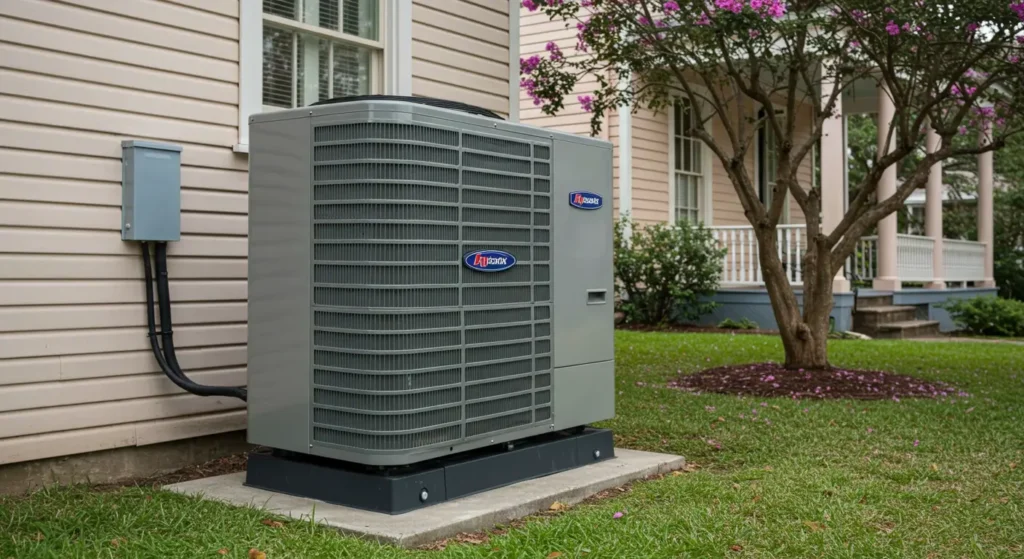
Choosing the Right System for New Orleans
Here’s the deal: not all HVAC systems are created equal, and what works elsewhere might struggle in our demanding environment. Let’s break down your options:
Central Air Systems That Work Here
✓ Traditional split systems – Reliable cooling with separate indoor/outdoor units, work well with existing ductwork, provide consistent temperatures throughout your home
✓ Heat pump systems – Increasingly popular because they handle both heating and cooling efficiently, perfect for our mild winters and demanding summers
✓ High-efficiency systems (16+ SEER) – More expensive upfront but the energy savings over 8-9 months of heavy use typically pay for themselves within 3-4 years
Ductless Systems for Challenging Homes
Perfect for historic homes where installing ductwork would be expensive or impossible. These systems provide excellent zone control and work great for:
- Room additions
- Converted spaces
- Homes with challenging layouts
- Situations where you want to cool specific areas efficiently
Ductless systems are incredibly efficient because they eliminate ductwork losses and let you cool only the spaces you’re using. Our ductless systems expertise includes custom designs for the unique challenges of New Orleans’ historic homes.
What Doesn’t Work Well
⚠️ Undersized systems – Some contractors try to save money with systems too small for our climate. Result: constant running, poor humidity control, premature failure
⚠️ Single-stage systems in larger homes – Often struggle with humidity control. Variable-speed or two-stage systems provide better dehumidification
⚠️ Poor ductwork – Can ruin even the best equipment. In our humid climate, duct leaks create moisture problems and waste energy
The Installation Process: What Actually Happens
Here’s what actually happens when you get a new system installed – no surprises, no confusion:
Week 1: Assessment and Planning
- Load calculation (proper sizing based on your actual home)
- Ductwork evaluation (can existing ducts handle new equipment?)
- Electrical assessment (do you need upgrades?)
- Permits and scheduling
Installation Day(s): → Day 1 Morning: Remove old system (with proper refrigerant recovery) → Day 1 Afternoon: Install new equipment and make electrical connections → Day 2: Complete ductwork modifications and system commissioning → Final step: Complete testing and customer walkthrough
Most installations take 1-2 days, but we don’t rush. Getting it right the first time beats dealing with callbacks and problems later.
What makes the difference: Professional installation includes details like proper refrigerant charging, ductwork sealing, and system commissioning that affect performance for years to come.
HVAC Installation Costs: Real Numbers
Let’s talk honestly about what HVAC installation actually costs in New Orleans. Prices vary significantly, but understanding typical ranges helps you budget appropriately.
Standard Efficiency Systems (14-15 SEER): $6,000-10,000 installed
- Meet minimum requirements
- May not provide optimal performance in a demanding climate
High Efficiency Systems (16+ SEER): $8,000-15,000 installed
- Additional cost typically pays for itself within 3-5 years
- Better humidity control and comfort
Ductless Mini-Split Systems: $3,000-8,000 depending on zones
- Often more cost-effective for specific applications
- Great for additions or challenging layouts
Heat Pump Systems: $7,000-12,000 installed
- Efficient heating and cooling in one system
- Popular choice for New Orleans applications
What Affects Your Final Cost
• Home size and complexity – Larger homes need bigger systems and more installation work
• Existing ductwork condition – Good ducts cost less than complete replacement
• Electrical upgrades – Older homes often need panel or circuit upgrades
• Accessibility – Tight crawl spaces or difficult locations increase labor time
• Special features – Humidity control, air purification, smart thermostats add value but increase cost
Bottom line: Quality installation is an investment in comfort and home value. While it might be tempting to choose the lowest bid, poor installation can lead to years of problems and higher operating costs.
Choosing Your HVAC Contractor
The contractor you choose matters just as much as the equipment you select. Poor installation can ruin even the best systems, while quality work ensures reliable operation for years.
Non-negotiables:
- Proper Louisiana licensing and insurance
- Local experience with New Orleans conditions
- Manufacturer certifications
- Detailed written estimates
Red flags to avoid:
- Door-to-door solicitors
- Unusually low bids (corners being cut somewhere)
- High-pressure tactics (“today only” pricing)
- No local references
Questions Every Contractor Should Answer
Before hiring anyone, ask these questions:
- How long have you been installing systems in New Orleans?
- Can you provide recent local references?
- Will you perform a detailed load calculation?
- What warranties do you provide on installation work?
- How do you handle permits and inspections?
Professional contractors welcome these questions and provide detailed answers. If someone seems evasive or defensive, keep looking.
Preparing for Installation Day
Getting ready for installation helps everything go smoothly and minimizes disruption to your routine.
Before we arrive: → Clear access paths to equipment areas → Protect valuables in work areas
→ Plan for 4-8 hours without heating/cooling → Arrange for electrical service if upgrades needed
During installation:
- Stay available for questions, but give installers space to work
- Ask questions about operation and maintenance
- Inspect completed work before final payment
After installation:
- Learn your new system (thermostat, filters, basic troubleshooting)
- Schedule maintenance to keep the warranty valid
- Keep all documentation for future reference
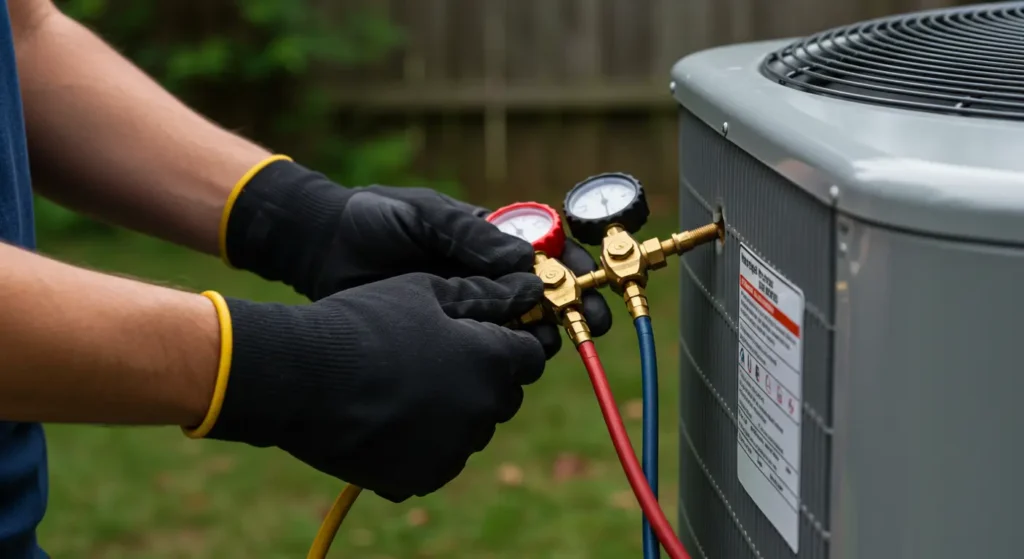
Energy Efficiency and Available Rebates
Maximizing efficiency and taking advantage of rebates can significantly reduce both installation costs and ongoing operating expenses.
High-efficiency benefits in New Orleans:
- SEER 16+ systems provide meaningful savings in extended cooling season
- Variable-speed technology offers better humidity control
- Smart thermostats can reduce energy use by 10-15%
- Proper installation can improve efficiency by 20-30%
Available rebate programs:
- Manufacturer rebates: Often $500-2,000 for qualifying systems
- Entergy rebates: Check current programs (offerings change)
- Federal tax credits: Consult a tax advisor about available credits
- Utility financing: Sometimes offers below-market rates
Long-term savings: The efficiency difference between 14 SEER and 18 SEER systems can mean $200-400 annual savings. Over 15-20 years, that’s serious money.
Common Installation Mistakes to Avoid
Learning from others’ mistakes helps ensure your installation goes right the first time.
⚠️ Sizing errors – Both oversized and undersized systems cause problems. Oversized systems have short cycles and don’t dehumidify. Undersized systems run constantly and wear out fast.
⚠️ Installation shortcuts – Poor ductwork, incorrect refrigerant charging, and inadequate electrical work all cause long-term problems.
⚠️ Equipment mismatches – Pairing components from different manufacturers or with different capacities reduces efficiency and can void warranties.
Working with experienced local contractors helps avoid these problems and ensures your installation provides years of reliable service.
Maintenance and Warranty Considerations
Your new system is a significant investment that requires ongoing care for optimal performance and longevity.
Warranty protection:
- Equipment warranties typically cover major components for 5-10 years
- Installation warranties should cover workmanship for at least one year
- Proper installation and regular maintenance are usually required
Maintenance requirements:
- Filter changes every 1-3 months (more frequently in our dusty environment)
- Professional maintenance annually (preferably before peak season)
- Seasonal preparation, including pre-summer checkups
Our maintenance services are designed specifically for New Orleans conditions and include all the checks needed to keep your new system operating efficiently.
Long-term care tips:
- Monitor system performance and energy bills
- Address problems promptly to prevent major damage
- Plan for future improvements or replacements
Proper care ensures your installation investment provides maximum value and reliability for years to come.
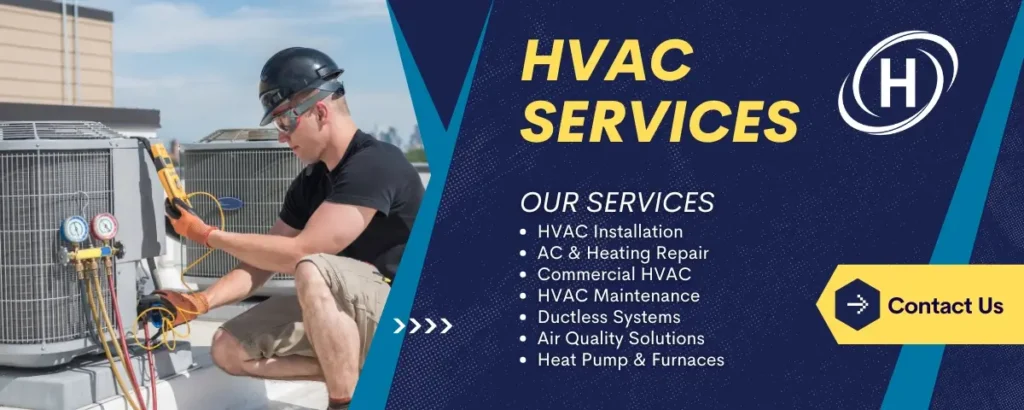
Ready to Get Started?
Planning your HVAC installation properly ensures you get a system that provides reliable comfort in New Orleans’ demanding climate.
What we provide:
- Free consultations without pressure or obligation
- Detailed load calculations for proper sizing
- Transparent pricing with written estimates
- Professional installation by experienced local technicians
- Comprehensive warranties on equipment and work
Don’t wait until your current system fails during peak summer heat. Planning ahead ensures you get the right system installed properly when you need it.
Ready to move forward? Call Hagerman Services at (504) 314-1486 to schedule your free HVAC installation consultation. We’ll assess your home, discuss your comfort goals, and provide detailed recommendations tailored to your specific needs.
Contact us today to start planning your HVAC installation project and ensure your family stays comfortable year-round in New Orleans’ challenging climate.
Frequently Asked Questions
Q: How long does HVAC installation take in New Orleans?
A: Most HVAC installations take 1-2 days, depending on system complexity and any required modifications to existing ductwork or electrical systems. Simple replacement installations are often completed in one day, while more complex projects requiring ductwork changes or electrical upgrades may take longer.
Q: What’s the best time of year for HVAC installation in New Orleans?
A: Spring (March-May) and fall (October-November) offer the best installation conditions with milder weather and contractor availability. Summer installations are possible but may involve longer wait times and working in hot conditions.
Q: Do I need permits for HVAC installation in New Orleans?
A: Yes, most HVAC installations require permits from local building departments. Professional contractors handle permit applications and ensure all work meets local codes and passes needed inspections.
Q: How do I know what size HVAC system I need?
A: Proper system sizing requires detailed load calculations considering your home’s square footage, insulation, windows, ceiling height, and local climate conditions. This analysis should be performed by qualified technicians, not estimated by rules of thumb.
Q: What’s the difference between SEER ratings and why do they matter in New Orleans?
A: SEER ratings measure cooling efficiency – higher numbers mean more efficient operation. In New Orleans’ extended cooling season, high-efficiency systems (16+ SEER) typically provide meaningful energy savings that justify the additional equipment cost within 3-5 years.
Q: Should I replace just the outdoor unit or the entire system?
A: Complete system replacement is usually recommended for optimal performance and warranty coverage. Mismatched components can reduce efficiency and create reliability problems, especially in our demanding climate, where systems work hard year-round.
